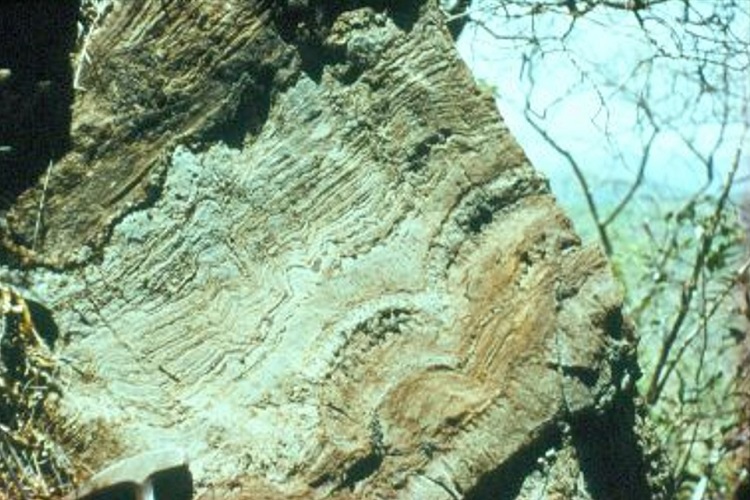Ammonium fertilised early life on Earth

A team of international scientists, led by the University of St Andrews, has demonstrated a new source of food for early life on the planet.
Life on Earth relies on the availability of critical elements like nitrogen (N) and phosphorus (P). These “nutrient” elements are ubiquitous to all life, as they are required for the formation of DNA – the blueprints of life, and proteins – the machinery. They are originally sourced from rocks and from the atmosphere, so their availability to life has fluctuated alongside significant changes in the chemistry of Earth’s surface environments over geologic time.
The research, in collaboration with Syracuse University, New York, and Royal Holloway, University of London, published in Nature Geoscience (Monday 20 May), reveals how the supply of these elements directly impacted planetary oxygenation and were key to the evolution of early life on Earth.
The most dramatic change in Earth history followed the evolution of oxygenic photosynthesis, which fundamentally transformed the planet by providing a source of carbon to the biosphere and a source of oxygen to the atmosphere, the latter culminating in the Great Oxidation Event (GOE) some 2.3 billion years ago.
Despite the critical importance of nutrients to life, the availability of nitrogen and phosphorus in pre-GOE oceans is not well understood, particularly how the supply of these elements drove and/or responded to planetary oxygenation.
Using samples of exceptionally well-preserved rocks that have been associated with early evidence for oxygenic photosynthesis 2.7 billion years ago, the team of researchers examined Earth’s early nitrogen cycle to decipher feedbacks associated with the initial stages of planetary oxygenation. The rock samples showed the first direct evidence of the build-up of a large pool of ammonium in the pre-GOE oceans. This ammonium would have provided an ample source of nitrogen to fuel the early biosphere and associated oxygen production.
Lead researcher Dr Aubrey Zerkle, Reader in the School of Earth and Environmental Sciences at the University of St Andrews, said: “Today we think of ammonium as the unpleasant odour in our cleaning supplies, but it would’ve served as an all-you-can-eat buffet for the first oxygen-generating organisms, a significant improvement on the dumpster scraps they relied on earlier in Earth’s history.”
Christopher Junium, Associate Professor in Earth Sciences at Syracuse University, added: “It is becoming ever more clear that the game of nutrient limitation has tipped back and forth through Earth’s history as life has evolved and as conditions have changed.”
As well as helping scientists better understand the role of the nitrogen cycle in global oxygenation, the new findings also provide context for other nutrient feedbacks during early planetary evolution.
Surprisingly, evidence for significant atmospheric oxygenation does not appear until 400 million years later, meaning that some other nutrient, such as phosphorus, must have been important in setting the evolutionary pace.
The study was supported by Natural Environment Research Council Standard grant NE/M001156/1 and the National Science Foundation grant NSF EAR-1455258.
The paper Ammonium availability in the Late Archean nitrogen cycle is published in Nature Geoscience and is available online.
Please ensure that the paper’s DOI (dx.doi.org/10.1038/s41561-019-0371-1) is included in all online stories and social media posts and that Nature Geoscience is credited as the source.
Issued by the University of St Andrews Communications Office.